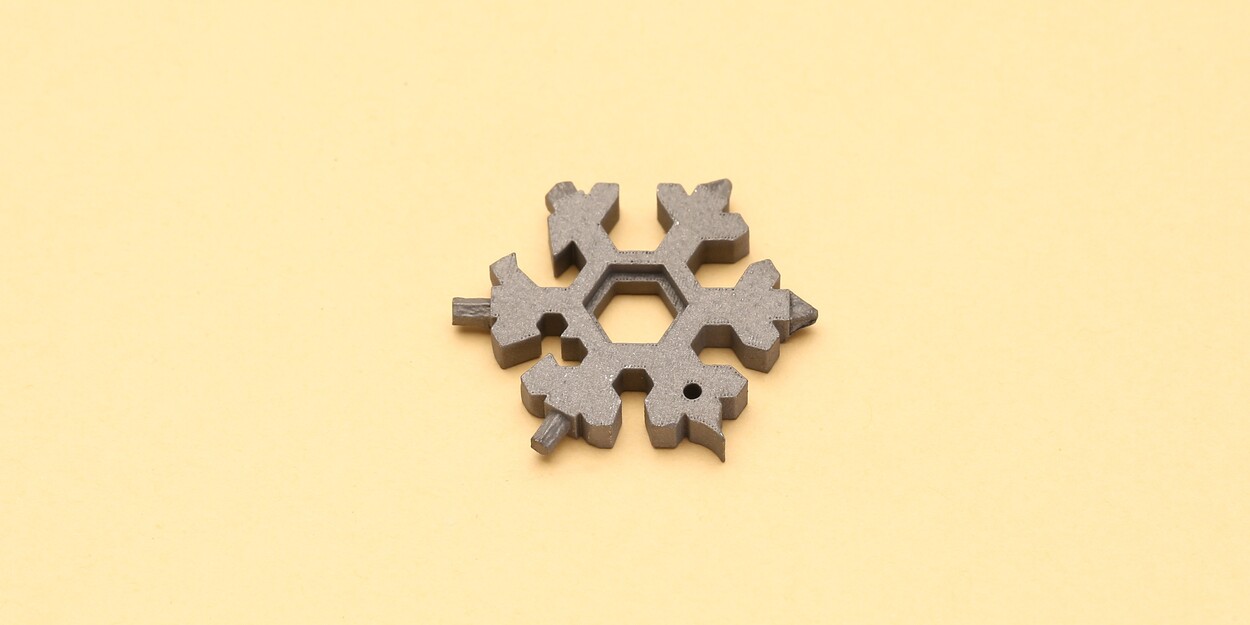Banner Image Courtesy of Hi3DP
Processes for Titanium 3D Printing
Titanium can be 3D printed using several advanced additive manufacturing technologies. The choice of process depends on part geometry, mechanical requirements, and production scale.
1. Powder Bed Fusion (PBF)
Selective Laser Melting (SLM) and Electron Beam Melting (EBM) are the most common PBF methods for titanium.
• SLM uses a high-powered laser to selectively melt titanium powder layer by layer in an inert atmosphere (usually argon).
• EBM uses an electron beam in a vacuum, which reduces oxidation risk and is ideal for large, dense parts.
• Advantages: High precision, excellent mechanical properties, and complex geometries.
• Limitations: Slower build rates compared to some other methods; requires post-processing.
2. Directed Energy Deposition (DED)
• Titanium powder or wire is fed into a focused energy source (laser or electron beam) to build parts or repair existing components.
• Advantages: Suitable for large-scale parts and repairs; can add material to existing structures.
• Limitations: Lower resolution than PBF; more challenging to achieve fine details.
3. Binder Jetting (Emerging for Titanium)
• Involves depositing a liquid binder onto a powder bed, followed by sintering and infiltration.
• Still in early development for titanium due to oxidation and sintering challenges.
Titanium Alloys That Used in 3D Printing
|
Alloy |
Composition |
Key Features |
Common Uses |
|
Ti-6Al-4V (Grade 5) |
6% Aluminum, 4% Vanadium |
High strength, corrosion resistance, excellent fatigue performance |
Aerospace, medical implants, motorsports |
|
Ti-6Al-4V ELI (Extra Low Interstitial) |
Lower oxygen content |
Improved fracture toughness, better for medical use |
Surgical implants, dental frameworks |
|
Grade 23 Titanium |
Similar to Ti-6Al-4V ELI |
Enhanced biocompatibility |
Orthopedic devices |
|
Commercially Pure (CP) Titanium |
~99% Titanium |
Maximum corrosion resistance, lower strength |
Chemical processing, marine applications |
Properties of 3D Printed Titanium
Mechanical Properties
1. High Strength-to-Weight Ratio: Comparable to steel in strength but ~45% lighter.
2. Excellent Fatigue Resistance: Critical for aerospace and medical applications.
3. Hardness: Typically 30–40 HRC for Ti-6Al-4V, contributing to wear resistance.
Thermal & Chemical Properties
1. Melting Point: ~1,660°C, making it suitable for high-temperature environments.
2. Corrosion Resistance: Outstanding in seawater, chlorine, and acidic conditions.
3. Oxidation Resistance: Strong at moderate temperatures; a protective oxide layer forms naturally.
Properties of 3D Printed Titanium Ti₆Al₄V at Hi3DP:
|
Dense Properties |
Metric |
Method |
|
Density |
4.39 g/cm3 |
WGE-Prod-067EN |
|
Relative Density |
99.5% |
WGE-Prod-067EN |
|
Mechanical Properties |
Metric |
Method |
|
Tensile Strength |
980MPa |
DIN EN ISO 6892-1:2009 |
|
Yield Strength |
900MPa |
DIN EN ISO 6892-1:2009 |
|
Elongation at Break |
14% |
DIN EN ISO 6892-1:2009 |
|
Elastic Modulus |
110GPa |
DIN EN ISO 6892-1:2009 |
|
Hardness |
340 HV |
ISO 6597-1:03-2006 |
|
Surface Properties |
Metric |
Method |
|
Roughness Ra |
20 µm |
ISO 4287 / AITM 1-00070 |
|
Roughness Rz |
80 µm |
ISO 4287 / AITM 1-00070 |
Advantages of Titanium 3D Printing
1. Complex Geometries
Additive manufacturing enables intricate lattice structures, internal channels, and topology-optimized designs that are impossible or costly with subtractive methods.
2. Lightweight Strength
Titanium’s high strength-to-weight ratio makes it ideal for weight-sensitive applications like aerospace and motorsports.
3. Material Efficiency
Near-net-shape production minimizes waste compared to machining from solid billets.
4. Customization
Perfect for patient-specific medical implants, custom aerospace components, and one-off prototypes.
5. Reduced Assembly
Complex parts can be printed as a single piece, eliminating joints and fasteners, which improves reliability.
Limitations & Challenges
1. High Material Cost
Titanium powder is expensive due to production complexity and purity requirements.
2. Processing Difficulty
Titanium’s reactivity requires inert atmospheres or vacuum conditions during printing to prevent contamination.
3. Post-Processing Challenges
• High Hardness: Machining 3D printed titanium is difficult and tool-wearing due to its hardness and toughness.
• Support Removal: Dense supports can be challenging to cut away.
• Surface Finishing: Achieving smooth surfaces often requires extensive polishing or chemical treatments.
4. Build Speed
PBF processes can be slow, especially for large parts.
5. Residual Stresses
Thermal gradients during printing can cause warping or cracking if not managed.
Applications Across Industries
Aerospace
1. Structural Components: Brackets, housings, and engine parts.
2. Weight Reduction: Lattice structures reduce mass without compromising strength.
3. Rapid Prototyping: Shortens development cycles for new aircraft designs.
Medical
1. Orthopedic Implants: Hip cups, spinal cages, and bone plates tailored to patient anatomy.
2. Dental Frameworks: Lightweight, corrosion-resistant structures for prosthetics.
3. Biocompatibility: Titanium integrates well with bone and tissue.
Automotive & Motorsports
1. Performance Parts: Suspension components, turbo housings, and brake calipers.
2. Customization: One-off designs for racing teams.
Industrial
1. Chemical Processing Equipment: Pumps, valves, and heat exchangers resistant to corrosion.
2. Marine Applications: Propeller blades, underwater housings.














